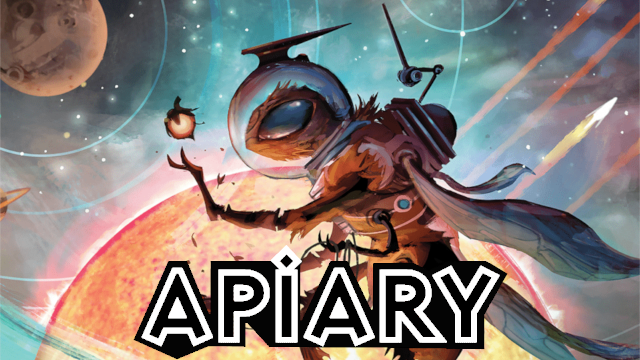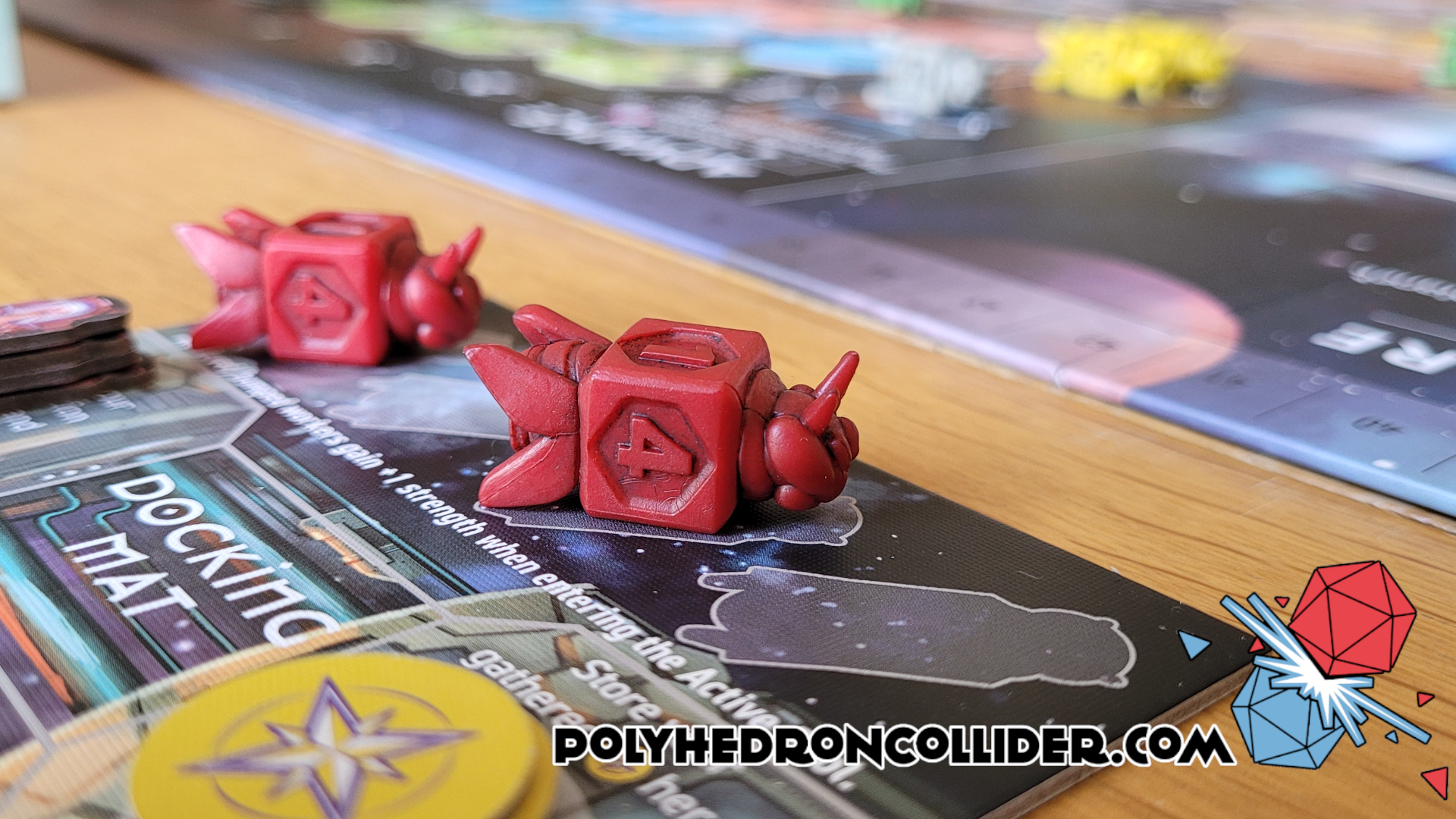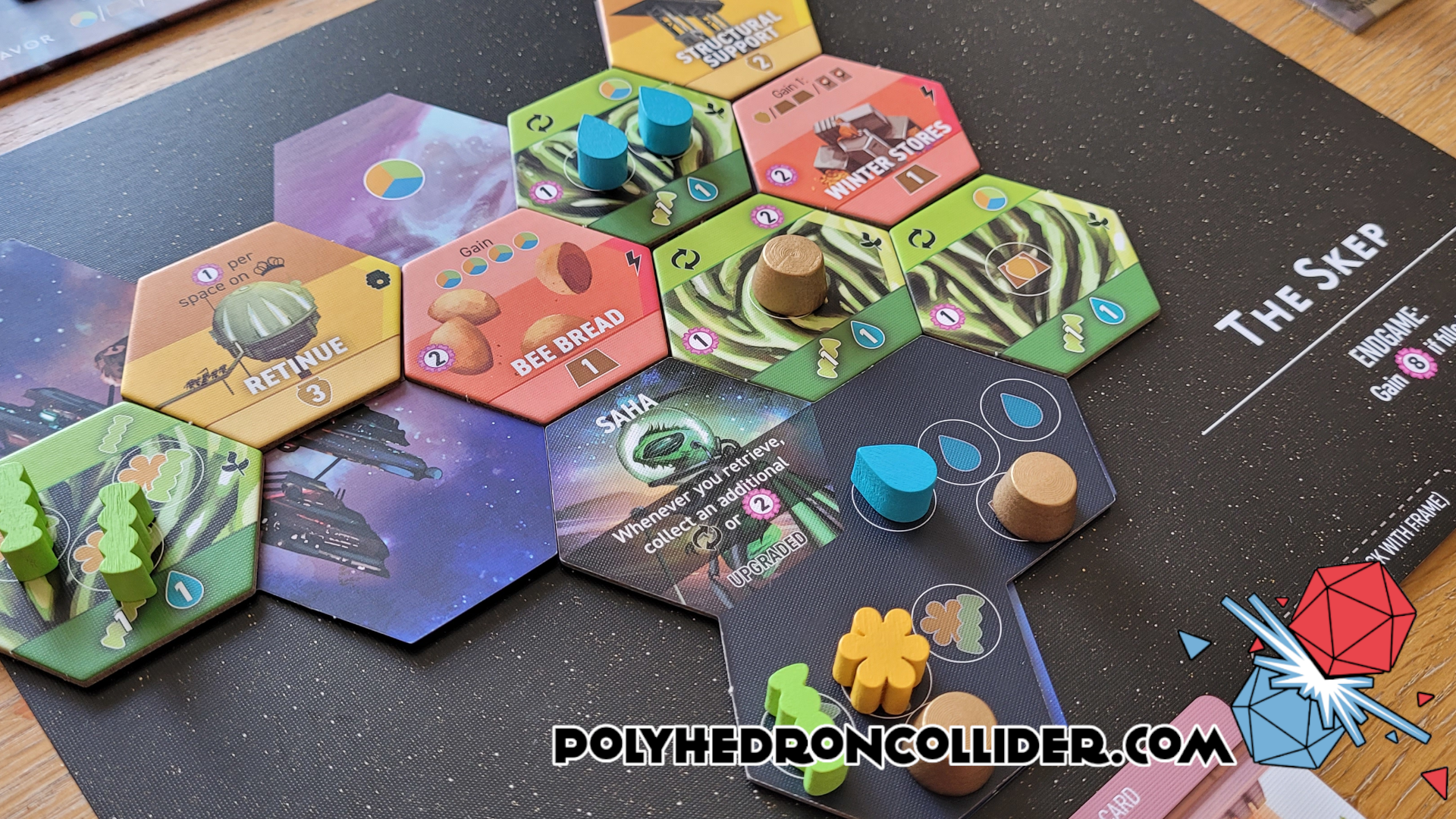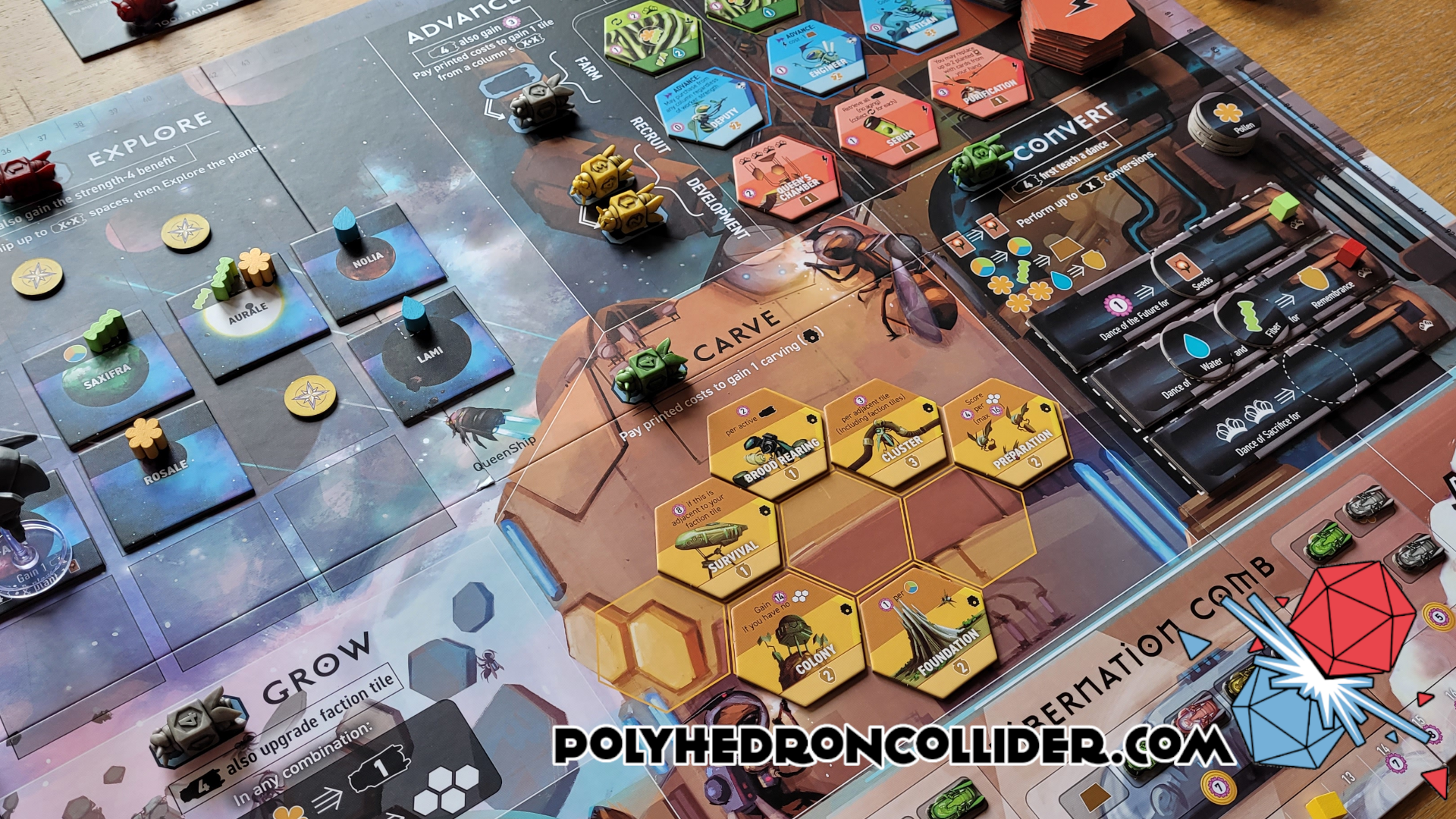Space. The final frontier. These are the voyages of the Queen Bee ship. Its continuing mission, to explore strange new worlds, to seek out new sources of pollen and fibre, and to carve honey runes into the side of the vessel. To find pollen where no bee has before.
So, the themes (plural) are a bit of an odd mix in Apiary…and by odd obviously, I mean utterly bonkers, but once you just settle in and accept it, what lies beneath is an enjoyable, middleweight worker placement game which has a few interesting twists and turns and a pretty short and snappy playtime.
Apiary does something fun and different straight off the bat with its core worker placement mechanic. In fact, it does two things. First off, your workers are “not-quite-dice”, they’re cubes with values one through four of the sides and on two opposing sides you have the head and thorax of a bee. The higher the shown value, the more effective and better performing your space-bee worker is.
The second interesting thing Apiary does here is that not only do each of the worker spaces on the board improve with the value of the worker, but the scores of all the workers present are used, so my two space-bee and your one space-bee means that you get to take a value three action. Which is pretty neat.
On top of this, the worker spaces aren’t closed when they are occupied as they would be in a “traditional” worker placement game, meaning you can still take the same action even if all the spaces are full (again, this is quite neat), all that happens is that your space-bee bumps my space-bee off the space and back to me.
(I’m going to stop throwing in all the “space-bees” as it’s getting a little confusing for me to write this - in short, I’m not happy about the smashing together of these two themes, but more on that later).
This “bumping” of bees is one of the key Clever Things™ about Apiary. When a bee is returned you have the option of increasing its value. Which is good. Or you can return it to your ‘Landing Area’ which can sometimes feel suboptimal, but it gets more important as the game progresses. The crux of this Clever Thing comes to the forefront when your value four bee is bumped. When that happens they go into hibernation, so you take a hibernation token and occupy a space in the hibernation honeycomb (literally), get the bonus and also progress to the end-game mechanism (once the hibernation honeycomb is full). Most importantly though, you lose your bee, meaning you’ll now have to take an action to “hatch” a new one, which naturally starts at value one.
Hopefully, you can see from this, that a core aspect of this game is the management of your bees and their values. Yes, you do want them to increase and improve, but not all of them and not so fast. You see, your other action - instead of placing a bee out on the board, is to recall all of your bees. When you do this you activate the tiles on your personal player board which then generate the resources that you need to spend to get more and better tiles on your board.
But, recalling your bees also increases their value, which isn’t always a good thing. Unlike the more traditional worker placement games, where getting additional workers is always a strong strategy, in Apiary you’re more often trying not to lose them. This inversion of this aspect of the mechanism is interesting and one of the things that makes Apiary an enjoyable challenge of optimisation. Not too dissimilar to Euphoria. Also a good thing.
The trade-off here though is that these clever things and interesting twists detract from the thing that makes worker placement games challenging and interesting: blocking actions. For me, a good worker placement (Viticulture, for example) encourages you to take actions that block or disrupt your opponents and conversely, is enjoyable in how you adapt your agenda to being blocked from an action. In this, Apiary’s “bumping” feels a little too “nice” and “kid glove-y”.
And while we are on the subject of things that just don’t sit quite right with me in Apiary. The smash-up of bees and space is just bobbins. I can’t tell if this was a bee-themed game that had space shoe-horned in, or a space game that has been painted with bees. I refuse to believe it was originally designed as a space bee game. The two themes just have such a vast amount of distance between them that the result feels silly as if it’s been dumbed down from what it was meant to be.
I’m left to conclude that this theme smash-up was to differentiate it in the market, so it didn’t just become another space game, or another bee/pollination/nature game. For me, this is a shame, because I think it does a disservice to the game: Apiary is a good game. It’s a straight-down-the-middle middleweight game, it’s light enough to be picked up easily and quickly. It’s interesting and different enough to be distinct in the worker placement category. Apiary is good quality, solid entertainment.
We discuss Apiary in Episode 146 of the Polyhedron Collider Podcast, in which I draw similarities between Apiary and a Marvel film. A Marvel film isn’t a deep, introspective, gritty Palme d'Or-winning piece of cinema. But it is fun, entertaining and a very enjoyable way to spend a few hours of your time, just like Apiary.
This review is based on a full retail copy of the game provided by our sponsor Kienda.



















.png)


0 comments:
Post a Comment